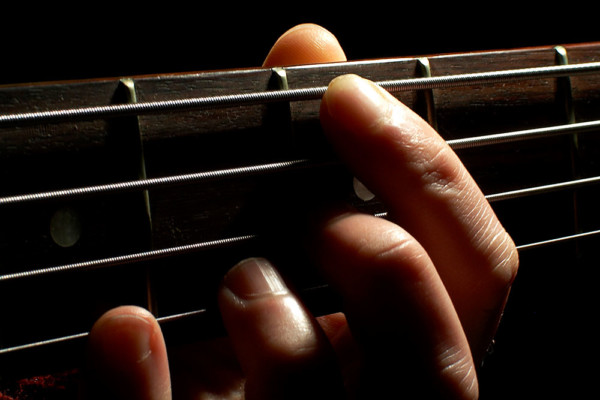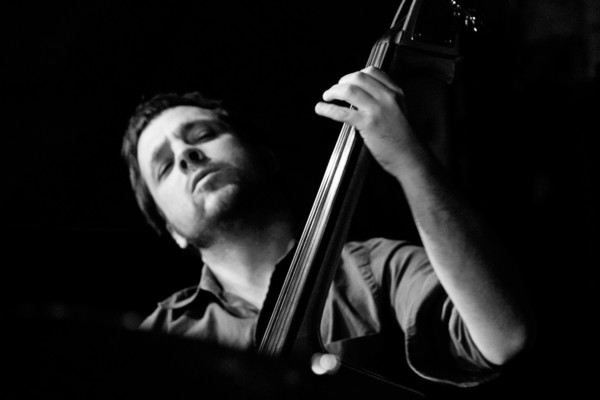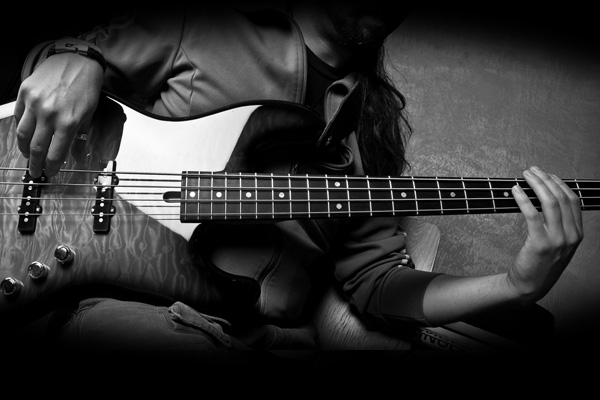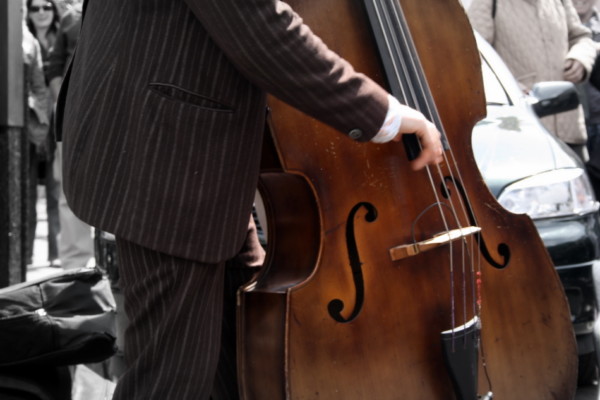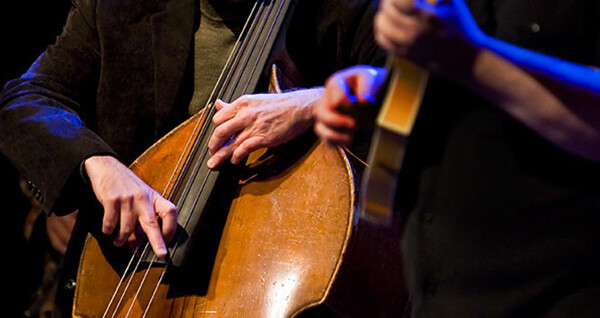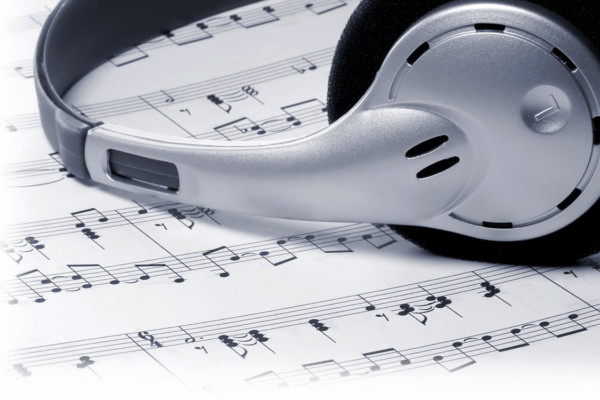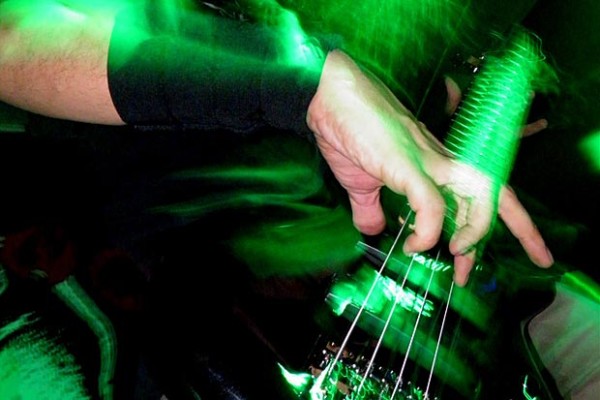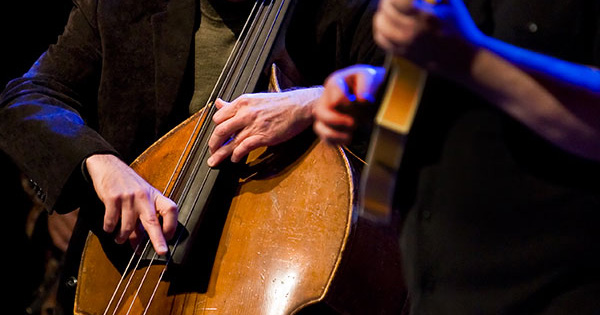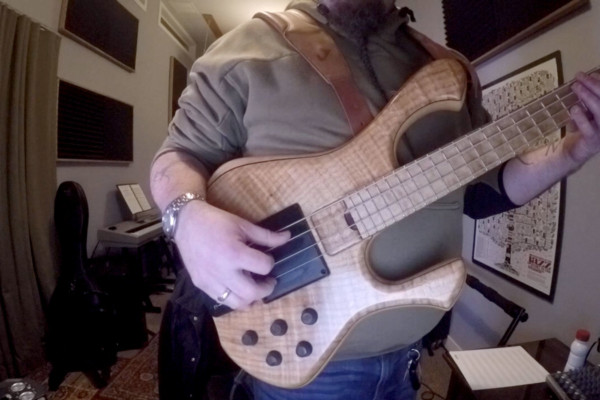Columns: How Tos, Advice & Lessons for Bass Players
Columns - Page 26
Melodic Minor vs. Diminished Scales Over Dominant Chords
Q: You know, jazz theory can be really, really confusing! I know that you can use a melodic minor a half step above a dominant chord as a substitution before resolving to the I-chord to emphasize tension notes (creating an out-sound). But, apparently, you can also use a whole-half diminished scale a half step up from the same dominant chord....
Finger Substitutions
When we play the same note, usually on the same string, consecutively, but with different fingers, it is called a finger substitution. For example: This technique is most often employed is when we want to avoid shifting within a slur. While we should be able to shift silently within a slur, it is sometimes musically more appealing, or simply cleaner,...
How Much Should I Get Paid for Gigs?
Q: I gig about 10-16 times a month on double bass and electric and live in a rural part of the UK. Some gigs involve a drive of 50-100 miles for about ?50-75. Do you have a minimum fee for local work, and a max distance you will drive for small bar type gigs? I am trying to find my...
Relative vs. Parallel Minor Scales
Q: What is the difference between “relative” and “parallel” when talking about jazz theory? I hear “relative minor” a lot, but I recently heard someone at school talk about “parallel minor.” A: Good question! First, I’ll take a look at this column I wrote in 2014 concerning modes (and the relative minor). The term “relative minor” refers to the modes....
Dealing with Blisters on the Pizzicato Hand
So, you recently acquired a double bass. This is great news! Welcome! Or perhaps you simply resolved that this was the year you got serious about playing and you increased your time at the instrument. Fantastic! Or maybe you picked up some regular gigs! Even better! Either way, this recent positive change in your life will allow you the opportunity...
Lesson Plans for the New Year
For this first installment of the new year, I thought that I would try and help motivate us all. I thought about the new year, new goals, fostering forward momentum and the dreaded new year’s resolutions popped into my head. Instead of encouraging all of us to go to the gym and stop eating pizza for breakfast, I wanted to...
Exercises: Thumb Position in the Lower Positions
When many of us first learn to play in “thumb position” (using thumb on top of the fingerboard to press the string down) we begin by placing thumb on the half-string harmonic (G on the G-string, 12th fret, if we had frets). In fact, much beginning thumb position study starts here. From here, intermediate thumb position study often focuses on...
How To Apply Your Transcriptions
Q: Can you give an example of how I might explore using the things I’ve transcribed in some way? I’ve been transcribing a lot this year (as a music student), but I’m not sure how to apply it or get anything from it. A: I spent years transcribing tunes, solos, melodies and bass lines before I ever really figured out...
Resistance to Change
Q: Why are some musicians resistant to changing gear and/or playing techniques when the player gets faced with pain, hits a technical wall or is dissatisfied with their own progress? A: Note: I saw this question on a Facebook thread I was tagged in recently and thought it was a good one. I paraphrased it a little bit to keep...
Scale Exercise in Thumb Position
When double bassists put their thumb on top of the fingerboard, rather than behind it, and use it to depress the string (just like the other fingers), we call that “thumb position.” There are a plethora of etude books and exercises to help us solidify the use of the thumb to press the string, but I’ve found a few particularly...
Bass Players To Know: Tony Garnier
I’m a firm believer in keeping good company. Entrepreneurs need a solid team, Presidents need a strong cabinet, and songwriters need a great band. After Bob Dylan was awarded the Nobel Prize, I figured it was time to revisit his catalog, do a bit of listening, and gain some insight on the players that bring his music to life. Certainly,...
Applying Three-Finger Right Hand Bass Technique
Q: I love your three-fingered right hand technique. Do you have any examples of how to apply it into songs I already know? A: This week I decided to answer the question with a video. Check out the PDF to follow along with Weather Report’s “River People” and Tower of Power’s “Oakland Stroke”.
